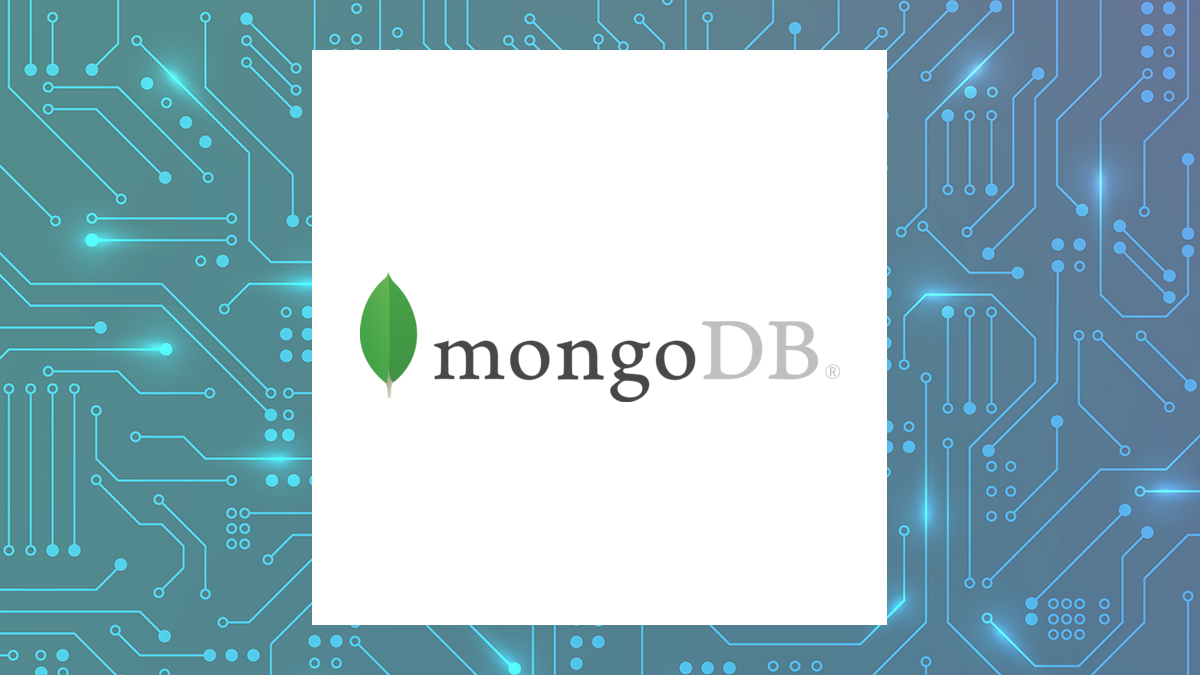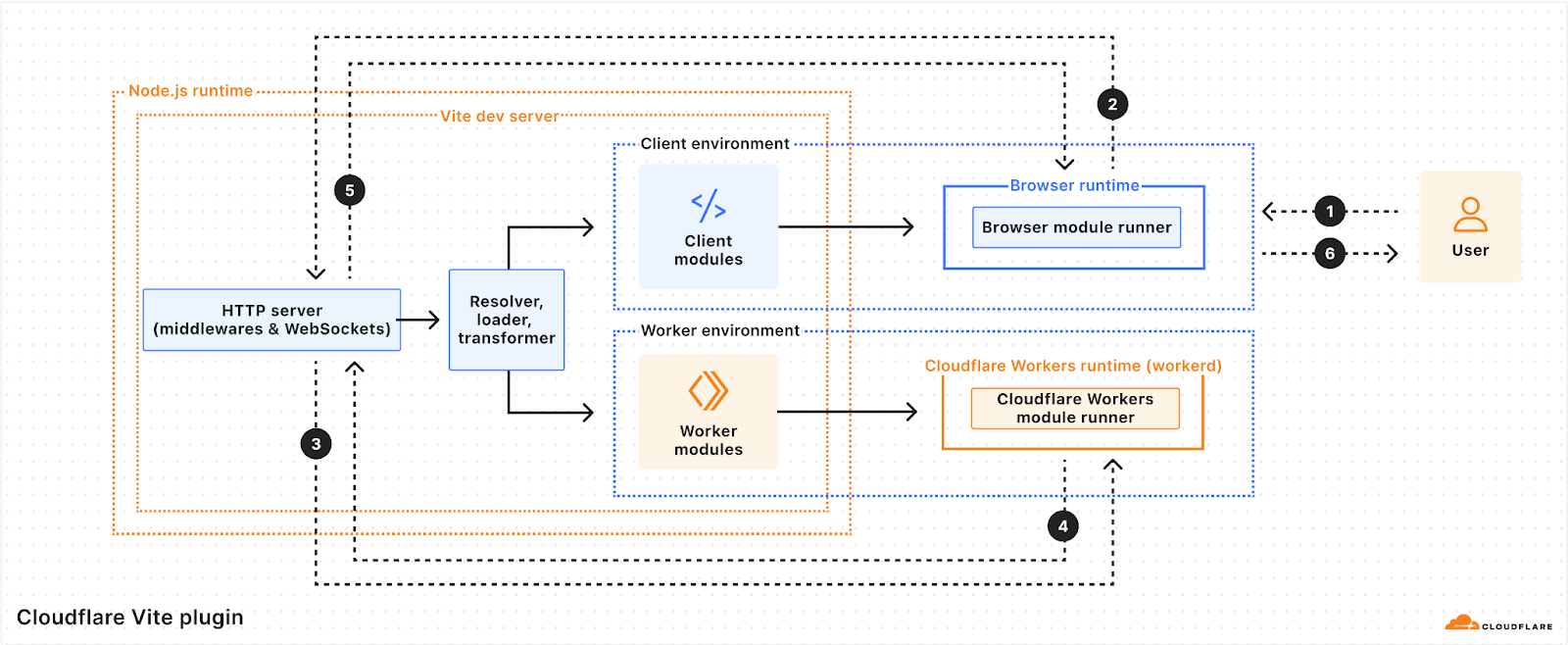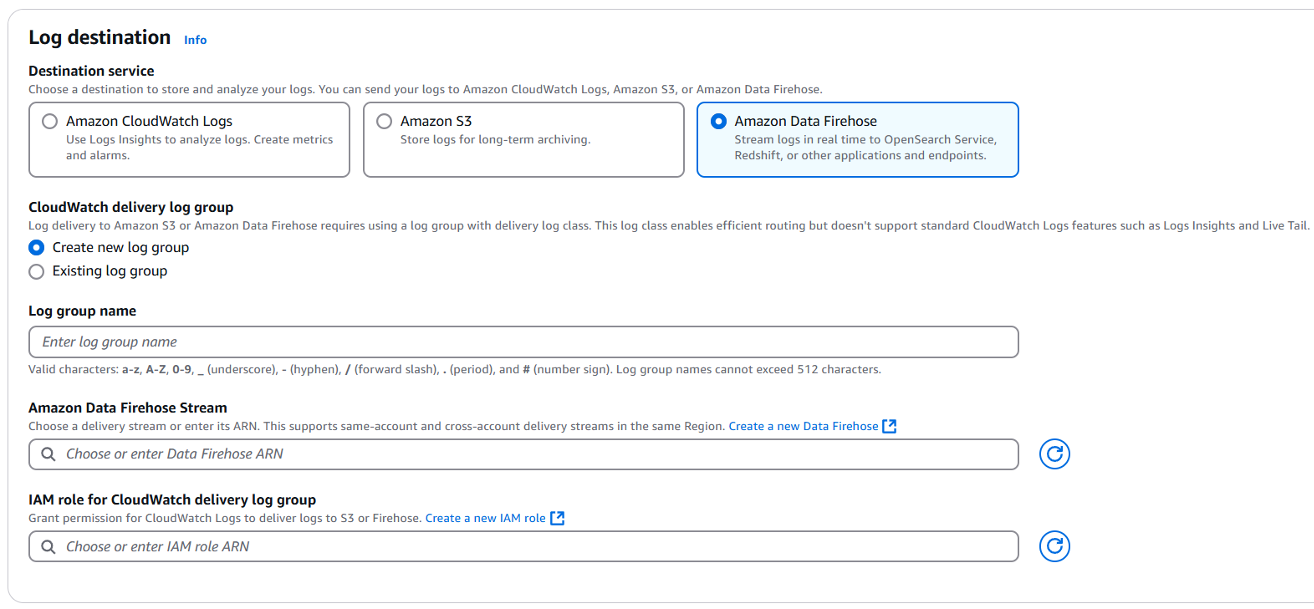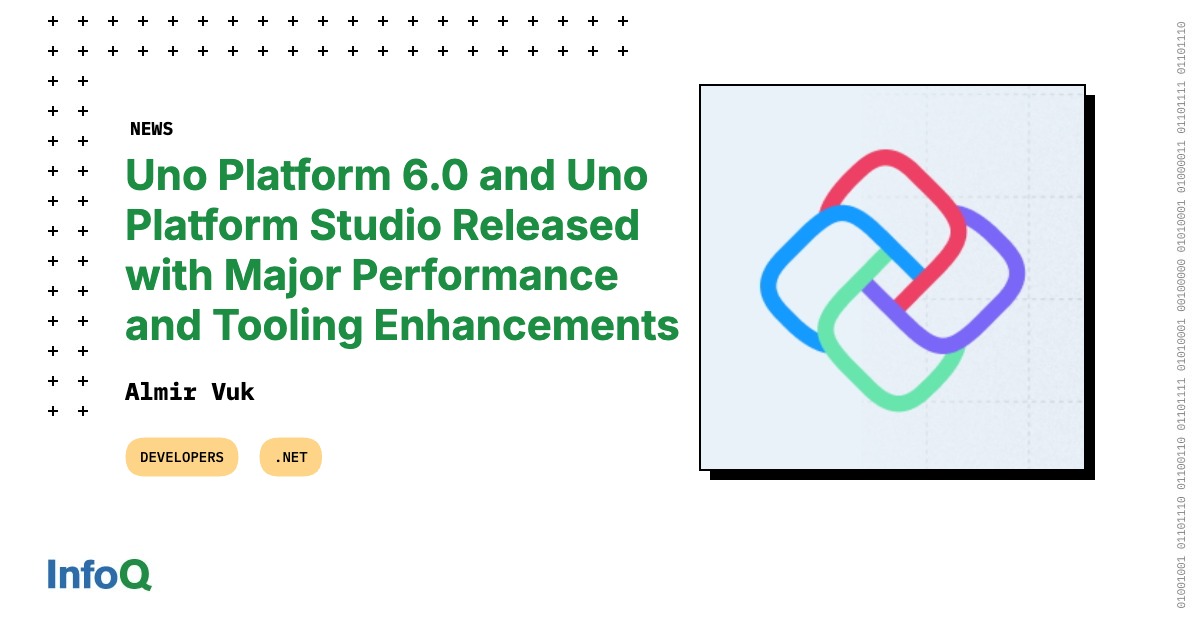Month: May 2025
OpenJDK News Roundup: Key Derivation, Scoped Values, Compact Headers, JFR Method Timing & Tracing

MMS • Michael Redlich

There was a flurry of activity in the OpenJDK ecosystem during the week of May 12th, 2025, highlighting: two JEPs elevated from Proposed to Target to Targeted and four JEPs elevated from Candidate to Proposed to Target for JDK 25; and one JEP elevated from its JEP Draft to Candidate status. Two of these will be finalized after their respective rounds of preview.
JEPs Targeted for JDK 25
Two JEPs have been elevated from Proposed to Target to Targeted for JDK 25.
JEP 510, Key Derivation Function API, announced here, proposes to finalize this feature, without change, after one round of preview, namely: JEP 478, Key Derivation Function API (Preview), delivered in JDK 24. This features introduces an API for Key Derivation Functions (KDFs), cryptographic algorithms for deriving additional keys from a secret key and other data, with goals to: allow security providers to implement KDF algorithms in either Java or native code; and enable the use of KDFs in implementations of JEP 452, Key Encapsulation Mechanism.
JEP 506, Scoped Values, announced here, proposes to finalize this feature, without change, after four rounds of preview, namely: JEP 487, Scoped Values (Fourth Preview), delivered in JDK 24; JEP 481, Scoped Values (Third Preview), delivered in JDK 23; JEP 464, Scoped Values (Second Preview), delivered in JDK 22; JEP 446, Scoped Values (Preview), delivered in JDK 21; and JEP 429, Scoped Values (Incubator), delivered in JDK 20. Formerly known as Extent-Local Variables (Incubator), this feature enables sharing of immutable data within and across threads. This is preferred to thread-local variables, especially when using large numbers of virtual threads.
JEPs Proposed to Target for JDK 25
Four JEPs have been elevated from Candidate to Proposed to Target for JDK 25.
JEP 519, Compact Object Headers, has been elevated from its JEP Draft 8354672 to Candidate to Proposed to Target for JDK 25 (announced here and here, respectively).This JEP proposes to promote this feature from experimental to product. Inspired by Project Lilliput, this feature “reduce[s] the size of object headers in the HotSpot JVM from between 96 and 128 bits down to 64 bits on 64-bit architectures.” More details on JEP 450 may be found in this InfoQ news story.
JEP 515, Ahead-of-Time Method Profiling, announced here, proposes to improve application warmup time by “making method-execution profiles from a previous run of an application instantly available, when the HotSpot JVM starts.” This allows the JIT compiler to immediately generate native code upon application startup as opposed to waiting for profiles to be collected.
JEP 514, Ahead-of-Time Command-Line Ergonomics, announced here, proposes to simplify the process of creating ahead-of-time caches, as described in JEP 483, Ahead-of-Time Class Loading & Linking, that may accelerate Java application startup by “simplifying the commands required for common use cases.“
JEP 507, Primitive Types in Patterns, instanceof, and switch (Third Preview), announced here, proposes a third round of preview, without change, to gain additional experience and feedback from the previous two rounds of preview, namely: JEP 488, Primitive Types in Patterns, instanceof, and switch (Second Preview), delivered in JDK 24; and JEP 455, Primitive Types in Patterns, instanceof, and switch (Preview), delivered in JDK 23. Under the auspices of Project Amber, this feature enhances pattern matching by allowing primitive type patterns in all pattern contexts, and extending instanceof and switch to work with all primitive types. More details may be found in this draft specification by Aggelos Biboudis, Principal Member of Technical Staff at Oracle.
Their respective reviews are expected to conclude by May 22, 2025.
New JEP Candidates
JEP 520, JFR Method Timing & Tracing, has been elevated from its JEP Draft 8328610 to Candidate status. This JEP proposes to extend the JDK Flight Recorder with facilities for method timing and tracing via the bytecode Instrumentation interface.
JDK 25 Feature Set (So Far) and Release Schedule
The JDK 25 release schedule, as approved by Mark Reinhold, Chief Architect, Java Platform Group at Oracle, is as follows:
- Rampdown Phase One (fork from main line): June 5, 2025
- Rampdown Phase Two: July 17, 2025
- Initial Release Candidate: August 7, 2025
- Final Release Candidate: August 21, 2025
- General Availability: September 16, 2025
With less than three weeks before the scheduled Rampdown Phase One, where the feature set for JDK 25 will be frozen, these are 13 JEPs included in the feature set so far:
JDK 25 is designated to be the next long-term support (LTS) release following JDK 21, JDK 17, JDK 11 and JDK 8.
OpenAI’s Stargate Project Aims to Build AI Infrastructure in Partner Countries Worldwide

MMS • Vinod Goje

OpenAI has announced a new initiative called “OpenAI for Countries” as part of its Stargate project, aiming to help nations develop AI infrastructure based on democratic principles. This expansion follows the company’s initial $500 billion investment plan for AI infrastructure in the United States.
“Introducing OpenAI for Countries, a new initiative to support countries around the world that want to build on democratic AI rails,” OpenAI stated in its announcement. The company reports that its Stargate project, first revealed in January with President Trump and partners Oracle and SoftBank, has begun construction of its first supercomputing campus in Abilene, Texas.
According to OpenAI, the initiative responds to international interest in similar infrastructure development. “We’ve heard from many countries asking for help in building out similar AI infrastructure—that they want their own Stargates and similar projects,” the company explained, noting that such infrastructure will be “the backbone of future economic growth and national development.”
The company emphasized its vision of democratic AI as technology that incorporates principles protecting individual freedoms and preventing government control concentration. OpenAI believes this approach “contributes to broad distribution of the benefits of AI, discourages the concentration of power, and helps advance our mission.”
The Stargate project operates through a consortium of major technology companies serving as both investors and technical partners. SoftBank, OpenAI, Oracle, and MGX provide the initial equity funding, with SoftBank handling financial responsibilities while OpenAI manages operations.
On the technical side, five major technology companies form the foundation of the project’s implementation. “Arm, Microsoft, NVIDIA, Oracle, and OpenAI are the key initial technology partners,” according to OpenAI. The infrastructure development leverages established relationships between these companies, particularly building upon OpenAI’s long-standing collaboration with NVIDIA that dates back to 2016 and its more recent partnership with Oracle.
The company outlines a comprehensive partnership framework for collaborating with foreign nations.
“OpenAI is offering a new kind of partnership for the Intelligence Age. Through formalized infrastructure collaborations, and in coordination with the US government,” the announcement explains, highlighting the company’s alignment with American foreign policy interests in technology development.
The partnership model includes multiple components addressing infrastructure, access, and economic development. OpenAI plans to “Partner with countries to help build in-country data center capacity” to support data sovereignty while enabling AI customization for local needs.
Citizens of participating countries would receive “customized ChatGPT” services tailored to local languages and cultures, aimed at improving healthcare, education, and public services delivery. OpenAI describes this as “AI of, by, and for the needs of each particular country.”
The company also emphasizes security investments and economic development through a startup funding approach where “Partner countries also would invest in expanding the global Stargate Project—and thus in continued US-led AI leadership,” reinforcing the initiative’s connection to American technological leadership.
OpenAI’s international partnerships incorporate extensive security protocols designed to protect AI models and intellectual property. The company has developed a security approach to address potential vulnerabilities.
“Safeguarding our models is a continuous commitment and a core pillar of our security posture,” OpenAI states, describing their security framework as “rigorous” and “continuously evolving.” This framework encompasses information security, governance, and physical infrastructure protection.
The security architecture adapts to match model capabilities, with OpenAI noting that “Our security measures are not static; they scale with the capabilities of our models and incorporate state-of-the-art protections.” These protections include hardware-backed security, zero-trust architecture, and cryptographic safeguards.
Personnel access represents another critical security dimension. “OpenAI will maintain explicit and continuous oversight over all personnel with access to our information systems, intellectual property, and models,” the company emphasizes, adding that “No individual or entity will gain such access without our direct approval.”
Before deploying models internationally, OpenAI conducts risk assessments through its Preparedness Framework. “Each deployment of new models will undergo risk evaluation prior to deployment,” acknowledging that some advanced models may present risks incompatible with certain environments.
OpenAI CEO Sam Altman expressed enthusiasm about the progress at the Texas site, tweeting:
Great to see progress on the first stargate in Abilene with our partners at Oracle today. Will be the biggest ai training facility in the world. The scale, speed, and skill of the people building this is awesome.
However, the massive infrastructure development has raised environmental concerns. Greg Osuri, founder of Akash Network, questioned the project’s sustainability approach:
This data center is generating 360 MW by burning natural gas, causing heavy pollution and emitting up to 1 million metric tons of carbon every year. I understand the choices are limited but would like to understand your future plans to switch to more cleaner or sustainable sources.
Zach DeWitt, partner at Wing VC, commented on the broader implications of this move:
OpenAI seems to be building and selling products at every layer of the AI stack: chips, data centers, APIs and the application layer. It’s unclear which layer(s) will and won’t be commoditized and OpenAI is hedging their bets up and down the AI stack. Very smart.
The company has specified geographic limitations for its international expansion strategy, maintaining restrictions on which nations can access its technology through its “Supported countries and territories” documentation.

MMS • Sergio De Simone

AWS recently announced the availability of Meta’s latest foundation models, Llama 4 Scout and Llama 4 Maverick, in Amazon Bedrock and AWS SageMaker JumpStart. Both models provide multimodal capabilities and follow the mixture-of-experts architecture.
Launched by Meta last April, Llama 4 Scout and Maverick include 17 billion active parameters distributed across 16 and 128 experts, respectively. Llama 4 Scout is optimized to run on a single NVIDIA H100 GPU for general-purpose tasks. According to Meta, Llama 4 Maverick provides enhanced reasoning and coding capabilities and outperforms other models in its class. Amazon highlights the value of the mixture-of-experts architecture in reducing compute costs, making advanced AI more accessible and cost-effective:
Thanks to their more efficient mixture of experts (MoE) architecture—a first for Meta—that activates only the most relevant parts of the model for each task, customers can benefit from these powerful capabilities that are more compute efficient for model training and inference, translating into lower costs at greater performance.
While Llama 4 Scout supports a context window of up to 10 million tokens, Amazon Bedrock currently allows up to 3.5 million tokens, but plans to expand it shortly. Llama 4 Maverick supports a maximum of one million tokens. In both cases, these represent a significant increase over the 128K context window available for Llama 3 models.
On Amazon SageMaker JumpStart, you can use the new models with SageMaker Studio or the Amazon SageMaker Python SDK depending on your use case. Both models default to a ml.p5.48xlarge instance, which features NVIDIA H100 Tensor Core GPUs. Alternatively, you can choose a ml.p5en.48xlarge instance powered by NVIDIA H200 Tensor Core GPUs. Llama 4 Scout also supports the ml.g6e.48xlarge instance type, which uses NVIDIA L40S Tensor Core GPUs.
Llama 4 models are available on several other cloud providers, including Databricks, GroqCloud, Lambda.ai, Cerebras Inference Cloud, and others. Additionally, you can access them on Hugging Face.
In addition to Scout and Maverick, Behemoth is the third model in the Llama 4 family, featuring 288 billion active parameters distributed across 16 experts. Meta describes Behemoth, currently in preview, as the most intelligent teacher model for distillation, having used it to train both Scout and Maverick.

MMS • RSS
Sora Investors LLC boosted its stake in shares of MongoDB, Inc. (NASDAQ:MDB – Free Report) by 443.8% during the 4th quarter, according to the company in its most recent filing with the Securities and Exchange Commission. The firm owned 54,380 shares of the company’s stock after buying an additional 44,380 shares during the period. Sora Investors LLC owned about 0.07% of MongoDB worth $12,660,000 at the end of the most recent reporting period.
Several other institutional investors and hedge funds have also recently bought and sold shares of the stock. Rafferty Asset Management LLC increased its holdings in shares of MongoDB by 24.1% in the 4th quarter. Rafferty Asset Management LLC now owns 52,321 shares of the company’s stock valued at $12,181,000 after purchasing an additional 10,172 shares during the period. Point72 Hong Kong Ltd increased its holdings in shares of MongoDB by 14.1% in the 4th quarter. Point72 Hong Kong Ltd now owns 33,599 shares of the company’s stock valued at $7,822,000 after purchasing an additional 4,141 shares during the period. Polar Asset Management Partners Inc. acquired a new position in shares of MongoDB in the 4th quarter valued at about $14,458,000. ProShare Advisors LLC increased its holdings in shares of MongoDB by 20.2% in the 4th quarter. ProShare Advisors LLC now owns 84,911 shares of the company’s stock valued at $19,768,000 after purchasing an additional 14,260 shares during the period. Finally, Quantinno Capital Management LP increased its holdings in shares of MongoDB by 100.2% in the 4th quarter. Quantinno Capital Management LP now owns 14,262 shares of the company’s stock valued at $3,321,000 after purchasing an additional 7,137 shares during the period. Institutional investors and hedge funds own 89.29% of the company’s stock.
Analysts Set New Price Targets
A number of equities analysts have recently weighed in on MDB shares. Citigroup dropped their target price on MongoDB from $430.00 to $330.00 and set a “buy” rating on the stock in a report on Tuesday, April 1st. Daiwa America upgraded MongoDB to a “strong-buy” rating in a report on Tuesday, April 1st. Stifel Nicolaus dropped their target price on MongoDB from $340.00 to $275.00 and set a “buy” rating on the stock in a report on Friday, April 11th. Daiwa Capital Markets assumed coverage on MongoDB in a report on Tuesday, April 1st. They issued an “outperform” rating and a $202.00 price objective on the stock. Finally, Canaccord Genuity Group dropped their price objective on MongoDB from $385.00 to $320.00 and set a “buy” rating on the stock in a report on Thursday, March 6th. Eight investment analysts have rated the stock with a hold rating, twenty-four have issued a buy rating and one has issued a strong buy rating to the company’s stock. Based on data from MarketBeat, the stock currently has an average rating of “Moderate Buy” and an average target price of $293.91.
View Our Latest Stock Analysis on MDB
Insider Buying and Selling
In related news, CAO Thomas Bull sold 301 shares of the firm’s stock in a transaction on Wednesday, April 2nd. The stock was sold at an average price of $173.25, for a total value of $52,148.25. Following the completion of the transaction, the chief accounting officer now directly owns 14,598 shares of the company’s stock, valued at $2,529,103.50. This trade represents a 2.02% decrease in their ownership of the stock. The sale was disclosed in a document filed with the Securities & Exchange Commission, which is available through this hyperlink. Also, CEO Dev Ittycheria sold 18,512 shares of the firm’s stock in a transaction on Wednesday, April 2nd. The stock was sold at an average price of $173.26, for a total value of $3,207,389.12. Following the completion of the transaction, the chief executive officer now directly owns 268,948 shares of the company’s stock, valued at approximately $46,597,930.48. This trade represents a 6.44% decrease in their ownership of the stock. The disclosure for this sale can be found here. Insiders sold a total of 34,423 shares of company stock valued at $7,148,369 over the last ninety days. 3.60% of the stock is owned by company insiders.
MongoDB Stock Performance
Shares of MDB traded up $0.79 during mid-day trading on Friday, hitting $191.29. The company’s stock had a trading volume of 7,849,265 shares, compared to its average volume of 1,914,406. MongoDB, Inc. has a one year low of $140.78 and a one year high of $379.06. The firm has a market capitalization of $15.53 billion, a PE ratio of -69.81 and a beta of 1.49. The stock’s 50-day moving average is $174.91 and its two-hundred day moving average is $238.95.
MongoDB (NASDAQ:MDB – Get Free Report) last posted its quarterly earnings data on Wednesday, March 5th. The company reported $0.19 earnings per share for the quarter, missing the consensus estimate of $0.64 by ($0.45). MongoDB had a negative net margin of 10.46% and a negative return on equity of 12.22%. The business had revenue of $548.40 million during the quarter, compared to the consensus estimate of $519.65 million. During the same period in the prior year, the company posted $0.86 earnings per share. Analysts expect that MongoDB, Inc. will post -1.78 EPS for the current fiscal year.
About MongoDB
MongoDB, Inc, together with its subsidiaries, provides general purpose database platform worldwide. The company provides MongoDB Atlas, a hosted multi-cloud database-as-a-service solution; MongoDB Enterprise Advanced, a commercial database server for enterprise customers to run in the cloud, on-premises, or in a hybrid environment; and Community Server, a free-to-download version of its database, which includes the functionality that developers need to get started with MongoDB.
Further Reading
Before you consider MongoDB, you’ll want to hear this.
MarketBeat keeps track of Wall Street’s top-rated and best performing research analysts and the stocks they recommend to their clients on a daily basis. MarketBeat has identified the five stocks that top analysts are quietly whispering to their clients to buy now before the broader market catches on… and MongoDB wasn’t on the list.
While MongoDB currently has a Moderate Buy rating among analysts, top-rated analysts believe these five stocks are better buys.

Wondering where to start (or end) with AI stocks? These 10 simple stocks can help investors build long-term wealth as artificial intelligence continues to grow into the future.

MMS • RSS
 MongoDB (NASDAQ:MDB – Get Free Report) had its price target dropped by analysts at Barclays from $280.00 to $252.00 in a report released on Friday,Benzinga reports. The brokerage currently has an “overweight” rating on the stock. Barclays‘s price objective suggests a potential upside of 31.74% from the company’s previous close.
MongoDB (NASDAQ:MDB – Get Free Report) had its price target dropped by analysts at Barclays from $280.00 to $252.00 in a report released on Friday,Benzinga reports. The brokerage currently has an “overweight” rating on the stock. Barclays‘s price objective suggests a potential upside of 31.74% from the company’s previous close.
A number of other brokerages also recently commented on MDB. Truist Financial reduced their price objective on MongoDB from $300.00 to $275.00 and set a “buy” rating for the company in a research report on Monday, March 31st. Daiwa America upgraded shares of MongoDB to a “strong-buy” rating in a research note on Tuesday, April 1st. China Renaissance assumed coverage on shares of MongoDB in a research note on Tuesday, January 21st. They issued a “buy” rating and a $351.00 price objective for the company. Daiwa Capital Markets initiated coverage on shares of MongoDB in a report on Tuesday, April 1st. They set an “outperform” rating and a $202.00 price objective for the company. Finally, Redburn Atlantic upgraded shares of MongoDB from a “sell” rating to a “neutral” rating and set a $170.00 target price on the stock in a research report on Thursday, April 17th. Eight equities research analysts have rated the stock with a hold rating, twenty-four have issued a buy rating and one has assigned a strong buy rating to the company’s stock. Based on data from MarketBeat, MongoDB presently has a consensus rating of “Moderate Buy” and a consensus price target of $293.91.
Get Our Latest Stock Report on MongoDB
MongoDB Stock Up 0.4%
Shares of NASDAQ MDB opened at $191.29 on Friday. MongoDB has a 12 month low of $140.78 and a 12 month high of $379.06. The company has a market cap of $15.53 billion, a P/E ratio of -69.81 and a beta of 1.49. The business’s 50 day moving average is $174.91 and its two-hundred day moving average is $238.95.
MongoDB (NASDAQ:MDB – Get Free Report) last announced its earnings results on Wednesday, March 5th. The company reported $0.19 earnings per share (EPS) for the quarter, missing analysts’ consensus estimates of $0.64 by ($0.45). MongoDB had a negative return on equity of 12.22% and a negative net margin of 10.46%. The company had revenue of $548.40 million for the quarter, compared to the consensus estimate of $519.65 million. During the same period last year, the firm posted $0.86 EPS. Sell-side analysts expect that MongoDB will post -1.78 earnings per share for the current fiscal year.
Insider Buying and Selling
In related news, CAO Thomas Bull sold 301 shares of the firm’s stock in a transaction dated Wednesday, April 2nd. The stock was sold at an average price of $173.25, for a total value of $52,148.25. Following the transaction, the chief accounting officer now owns 14,598 shares in the company, valued at $2,529,103.50. This trade represents a 2.02% decrease in their ownership of the stock. The transaction was disclosed in a legal filing with the Securities & Exchange Commission, which is available at the SEC website. Also, insider Cedric Pech sold 1,690 shares of MongoDB stock in a transaction dated Wednesday, April 2nd. The stock was sold at an average price of $173.26, for a total value of $292,809.40. Following the completion of the sale, the insider now owns 57,634 shares of the company’s stock, valued at approximately $9,985,666.84. The trade was a 2.85% decrease in their ownership of the stock. The disclosure for this sale can be found here. Insiders sold 34,423 shares of company stock worth $7,148,369 in the last quarter. Insiders own 3.60% of the company’s stock.
Institutional Inflows and Outflows
Large investors have recently added to or reduced their stakes in the business. OneDigital Investment Advisors LLC lifted its holdings in MongoDB by 3.9% in the fourth quarter. OneDigital Investment Advisors LLC now owns 1,044 shares of the company’s stock valued at $243,000 after buying an additional 39 shares during the period. Avestar Capital LLC raised its position in shares of MongoDB by 2.0% during the 4th quarter. Avestar Capital LLC now owns 2,165 shares of the company’s stock valued at $504,000 after acquiring an additional 42 shares during the last quarter. Aigen Investment Management LP lifted its stake in shares of MongoDB by 1.4% in the 4th quarter. Aigen Investment Management LP now owns 3,921 shares of the company’s stock valued at $913,000 after purchasing an additional 55 shares during the period. Handelsbanken Fonder AB boosted its position in shares of MongoDB by 0.4% in the 1st quarter. Handelsbanken Fonder AB now owns 14,816 shares of the company’s stock worth $2,599,000 after purchasing an additional 65 shares during the last quarter. Finally, Perigon Wealth Management LLC grew its stake in shares of MongoDB by 2.7% during the fourth quarter. Perigon Wealth Management LLC now owns 2,528 shares of the company’s stock worth $627,000 after purchasing an additional 66 shares during the period. 89.29% of the stock is currently owned by institutional investors and hedge funds.
About MongoDB
MongoDB, Inc, together with its subsidiaries, provides general purpose database platform worldwide. The company provides MongoDB Atlas, a hosted multi-cloud database-as-a-service solution; MongoDB Enterprise Advanced, a commercial database server for enterprise customers to run in the cloud, on-premises, or in a hybrid environment; and Community Server, a free-to-download version of its database, which includes the functionality that developers need to get started with MongoDB.
See Also
Receive News & Ratings for MongoDB Daily – Enter your email address below to receive a concise daily summary of the latest news and analysts’ ratings for MongoDB and related companies with MarketBeat.com’s FREE daily email newsletter.

MMS • Steef-Jan Wiggers
Cloudflare’s new Vite plugin (v1.0) streamlines web application development on Cloudflare Workers by integrating the Workers runtime directly into the Vite build process and adding official support for React Router v7.
The plugin leverages Vite 6’s Environment API to allow developers to run Worker code within the workerd runtime, aligning development and production environments. Michal Kuncio, a senior frontend engineer, noted on X:
By leveraging the @vite_js Environment API, you can now use Cloudflare Workers on your development server to mimic production behavior.
Moreover, this integration builds on Vite’s popularity as a fast build tool. Developers like Shivani Sharma on LinkedIn praise it for its superior speed, bundling, and configuration flexibility compared to Create React App and its efficient hot module replacement and robust plugin ecosystem.
Vite 6 introduces the Environment API, a significant architectural change that enables the Vite dev server to interact with various custom runtime environments, including workers. Cloudflare collaborated with the Vite team on this API.

(Source: Cloudflare blog post)
The Cloudflare Vite plugin supports single-page applications (SPAs) built with frameworks like React, Vue, and Svelte. Developers can create new React SPAs using the create-cloudflare CLI, which handles create-vite and configures the Cloudflare Vite plugin. Existing Vite SPA projects can be updated by adding the @cloudflare/vite-plugin dependency and a wrangler.jsonc configuration file.
The plugin integrates the Vite dev server with Workers Assets for front-end applications. In addition, the plugin streamlines the development and deployment workflow for applications with a Worker backend. The Vite development server runs the Worker in the Cloudflare Workers runtime. Developers can modify Worker code (e.g., in api/index.ts) and see changes without losing UI state. The plugin also simplifies the build and deployment process: vite build outputs both client and server code, vite preview allows previewing the build in the Workers runtime, and wrangler deploys the application directly.
The Cloudflare Vite plugin also supports React Router v7. Developers can create new React Router applications using the create-cloudflare CLI. Ardizanki, a software engineer specializing in the React ecosystem, tweeted:
React Router is the best bridge from React 18 to 19. Use it as a full framework or as a library within your own architecture.
The plugin simplifies the Worker’s configuration, giving developers more control.
Lastly, the plugin supports the complete Cloudflare Developer Platform, including KV, D1, Service Bindings, RPC, Durable Objects, Workflows, and Workers AI. Existing Workers can be adapted for Vite by installing the @cloudflare/vite-plugin dependency and adding a Vite configuration.

MMS • RSS
Nomura Holdings Inc. cut its position in shares of MongoDB, Inc. (NASDAQ:MDB – Free Report) by 85.1% during the 4th quarter, according to its most recent disclosure with the Securities and Exchange Commission (SEC). The fund owned 12,183 shares of the company’s stock after selling 69,669 shares during the quarter. Nomura Holdings Inc.’s holdings in MongoDB were worth $2,836,000 at the end of the most recent reporting period.
Several other large investors have also recently added to or reduced their stakes in the company. Nuveen Asset Management LLC lifted its stake in MongoDB by 9.7% in the fourth quarter. Nuveen Asset Management LLC now owns 370,986 shares of the company’s stock valued at $86,369,000 after buying an additional 32,844 shares during the last quarter. OMERS ADMINISTRATION Corp lifted its stake in MongoDB by 20.4% in the fourth quarter. OMERS ADMINISTRATION Corp now owns 3,032 shares of the company’s stock valued at $706,000 after buying an additional 514 shares during the last quarter. Morse Asset Management Inc lifted its stake in MongoDB by 160.7% in the fourth quarter. Morse Asset Management Inc now owns 782 shares of the company’s stock valued at $182,000 after buying an additional 482 shares during the last quarter. LMR Partners LLP bought a new stake in MongoDB in the fourth quarter valued at $22,117,000. Finally, Lighthouse Investment Partners LLC lifted its stake in MongoDB by 245.5% in the fourth quarter. Lighthouse Investment Partners LLC now owns 19,000 shares of the company’s stock valued at $4,423,000 after buying an additional 13,500 shares during the last quarter. 89.29% of the stock is currently owned by institutional investors.
Insider Buying and Selling
In other MongoDB news, insider Cedric Pech sold 1,690 shares of the firm’s stock in a transaction dated Wednesday, April 2nd. The stock was sold at an average price of $173.26, for a total transaction of $292,809.40. Following the completion of the sale, the insider now directly owns 57,634 shares in the company, valued at approximately $9,985,666.84. This trade represents a 2.85% decrease in their position. The sale was disclosed in a legal filing with the SEC, which is available through this hyperlink. Also, Director Dwight A. Merriman sold 885 shares of the firm’s stock in a transaction dated Tuesday, February 18th. The stock was sold at an average price of $292.05, for a total value of $258,464.25. Following the sale, the director now owns 83,845 shares of the company’s stock, valued at $24,486,932.25. The trade was a 1.04% decrease in their ownership of the stock. The disclosure for this sale can be found here. In the last quarter, insiders have sold 34,423 shares of company stock valued at $7,148,369. 3.60% of the stock is owned by corporate insiders.
Analyst Ratings Changes
MDB has been the topic of a number of recent research reports. Wells Fargo & Company cut MongoDB from an “overweight” rating to an “equal weight” rating and cut their target price for the company from $365.00 to $225.00 in a research note on Thursday, March 6th. Mizuho cut their target price on MongoDB from $250.00 to $190.00 and set a “neutral” rating on the stock in a research note on Tuesday, April 15th. Rosenblatt Securities reiterated a “buy” rating and issued a $350.00 target price on shares of MongoDB in a research note on Tuesday, March 4th. KeyCorp cut MongoDB from a “strong-buy” rating to a “hold” rating in a research note on Wednesday, March 5th. Finally, Needham & Company LLC cut their target price on MongoDB from $415.00 to $270.00 and set a “buy” rating on the stock in a research note on Thursday, March 6th. Eight equities research analysts have rated the stock with a hold rating, twenty-four have given a buy rating and one has given a strong buy rating to the stock. According to MarketBeat.com, the stock has a consensus rating of “Moderate Buy” and an average price target of $293.91.
Get Our Latest Stock Analysis on MongoDB
MongoDB Trading Up 0.4%
NASDAQ:MDB traded up $0.79 during mid-day trading on Friday, reaching $191.29. 7,849,265 shares of the stock were exchanged, compared to its average volume of 1,914,406. The business has a fifty day moving average price of $174.91 and a 200 day moving average price of $238.95. The firm has a market capitalization of $15.53 billion, a PE ratio of -69.81 and a beta of 1.49. MongoDB, Inc. has a 1-year low of $140.78 and a 1-year high of $379.06.
MongoDB (NASDAQ:MDB – Get Free Report) last issued its quarterly earnings results on Wednesday, March 5th. The company reported $0.19 earnings per share for the quarter, missing analysts’ consensus estimates of $0.64 by ($0.45). The company had revenue of $548.40 million during the quarter, compared to analysts’ expectations of $519.65 million. MongoDB had a negative return on equity of 12.22% and a negative net margin of 10.46%. During the same period in the prior year, the business posted $0.86 EPS. On average, sell-side analysts forecast that MongoDB, Inc. will post -1.78 earnings per share for the current year.
About MongoDB
MongoDB, Inc, together with its subsidiaries, provides general purpose database platform worldwide. The company provides MongoDB Atlas, a hosted multi-cloud database-as-a-service solution; MongoDB Enterprise Advanced, a commercial database server for enterprise customers to run in the cloud, on-premises, or in a hybrid environment; and Community Server, a free-to-download version of its database, which includes the functionality that developers need to get started with MongoDB.
Read More
Before you consider MongoDB, you’ll want to hear this.
MarketBeat keeps track of Wall Street’s top-rated and best performing research analysts and the stocks they recommend to their clients on a daily basis. MarketBeat has identified the five stocks that top analysts are quietly whispering to their clients to buy now before the broader market catches on… and MongoDB wasn’t on the list.
While MongoDB currently has a Moderate Buy rating among analysts, top-rated analysts believe these five stocks are better buys.

Today, we are inviting you to take a free peek at our proprietary, exclusive, and up-to-the-minute list of 20 stocks that Wall Street’s top analysts hate.
Many of these appear to have good fundamentals and might seem like okay investments, but something is wrong. Analysts smell something seriously rotten about these companies. These are true “Strong Sell” stocks.

MMS • Craig Risi

In a move to enhance internet security, the CA/Browser Forum (CA/B Forum) has approved a proposal to reduce the maximum validity period of SSL/TLS certificates from the current 398 days to just 47 days by March 15, 2029. This decision, initially proposed by Apple and endorsed by major industry players including Google, Mozilla, and Sectigo, aims to mitigate risks associated with long-lived certificates and encourage automation in certificate management.
According to their proposal, the transition to shorter SSL/TLS certificate lifespans will take place gradually over several years. Starting on March 15, 2026, the maximum validity period for certificates will be reduced to 200 days. This will be followed by another reduction on March 15, 2027, bringing the limit down to 100 days. Finally, on March 15, 2029, the maximum lifespan will be shortened to just 47 days, marking a significant shift in how certificate management is handled across the industry.
Additionally, the period during which domain validation information can be reused will decrease from 398 days to 10 days by 2029, necessitating more frequent revalidation processes.
The rationale behind this change is to enhance security by limiting the window during which a compromised certificate can be exploited. Shorter lifespans reduce reliance on certificate revocation mechanisms, which have historically been unreliable.
Some professionals express skepticism about the practicality and necessity of this change. For instance, Daniel V. Bailey questioned the lack of empirical evidence supporting the move, stating:
“Do…uh, we have hard data to show this is a good idea? I get the intent, for sure. Cert revocation checks just don’t work very well, and automated tools can help you renew your certificates automagically. It’s a pity that in practice, companies will have legacy systems and appliances where they can’t easily automate”.
Others highlight the potential operational challenges, particularly for organizations lacking automation capabilities. A Reddit user commented:
“I think the cost, including to public sector entities, of having to automate all cert rotations – combined with the complete lack of actual evidence (attacks this would have prevented) to sell it as a ‘security’ measure – will result in the government taking a good, hard, overdue look at the influence and gatekeeper power wielded by the unaccountable CA/BF cabal, by the time these deadlines come to pass”.
Proponents of reducing SSL/TLS certificate lifespans argue that shorter validity periods enhance security by limiting the window during which a compromised certificate can be exploited. As noted by Sectigo, shorter certificate validity periods reduce risks like private key compromise, misissuance, and revocation delays, thereby strengthening digital security.
Additionally, the move towards shorter lifespans encourages the adoption of automated certificate management. According to AppViewX, short-lived certificates necessitate frequent renewals, which are best handled through automation to prevent certificate expiry and outages. Automated solutions ensure seamless certificate lifecycle management, bolstering compliance, operational efficiency, and digital trust.
As the industry adapts to these changes, organizations will need to assess their certificate management practices and implement automation where possible to maintain security and compliance in the evolving digital landscape.
AWS Lambda Introduces Tiered Pricing for CloudWatch Logs and Expands Logging Destinations

MMS • Steef-Jan Wiggers
AWS has announced significant updates to Lambda logging, introducing volume-based tiered pricing for Amazon CloudWatch Logs and adding Amazon S3 and Amazon Data Firehose as new, cost-effective destinations for Lambda logs. Effective May 1st, 2025, these changes aim to reduce logging costs for high-volume Lambda deployments and offer greater flexibility in integrating with a broader range of monitoring tools.
The move to tiered pricing is particularly welcome news for AWS customers who have experienced the often-hidden costs associated with CloudWatch Logs. As senior cloud architect Mark Lambert noted on LinkedIn:
CloudWatch logs are a common hidden cost gotcha for new AWS customers. Without a strategy, you can quickly burn through your cloud budget and erode stakeholder trust.
The company categorizes the new tiered pricing model for Lambda logs in CloudWatch Logs as Vended Logs, offering progressively lower per-GB costs as log volume increases. For example, in the US East (N. Virginia) region, costs can decrease from $0.50 per GB for the first 10 TB to as low as $0.05 per GB for over 50 TB monthly. As Sandro Volpicella, a freelance software developer, noted on X:
Your CloudWatch Costs could go down by themselves with this launch. AWS counts Logs coming from Lambda now as ‘vented logs,’ and they come with a volume-tiered pricing model.

(Source: Tweet from Sandro Volpicella)
In addition, in a recent Duckbill Group blog post, Eric Pullen notes that while this is a significant benefit for heavy loggers, those using under 10 TB per month per account will see no immediate change, as the first tier matches the previous flat rate.
Adding S3 and Firehose as direct logging destinations for Lambda functions is also a key development. Pullen highlights that this eliminates the need for complex Lambda-based forwarders and unlocks use cases like long-term compliance archiving on S3, advanced analytics, and easier integration with third-party observability platforms via Firehose. However, he hopes that the pricing for these new destinations will become more competitive to encourage broader adoption.
According to Shridhar Pandey and Matthew Barker in the AWS blog post:
These enhancements provide a more straightforward and more cost-effective logging experience for Lambda users.
Pullen echoes this sentiment, emphasizing the potential for substantial cost savings for large enterprises. He also cautions that:
Any custom-written CloudWatch Log reports will need updating due to the pricing change. Additionally, he reminds users that the tiered pricing applies per AWS account, potentially influencing multi-account strategies.
While CloudWatch Logs remains the default logging destination, users can now configure S3 or Firehose as alternatives. AWS encourages users to review the documentation and pricing details to optimize their Lambda logging strategies, including considering log levels and retention policies to maximize cost savings from the new tiered pricing.

(Source: Amazon Compute blog post)
The new logging features are available in all commercial AWS regions that Lambda and CloudWatch Logs support. Configuration for S3 and Firehose destinations in the Lambda console is initially available in select regions, with more to follow.
Uno Platform 6.0 and Uno Platform Studio Released with Major Performance and Tooling Enhancements

MMS • Almir Vuk

The Uno Platform team has announced the general availability of Uno Platform 6.0 and Uno Platform Studio, introducing a broad set of enhancements aimed at improving developer productivity and cross-platform performance.
As stated in an official blog post, Uno Platform Studio is built on top of the open-source Uno Platform, and it delivers an easier development workflow for developers to build and ship .NET applications more efficiently using a single codebase.
One of the major highlights is Hot Design, a runtime visual designer now reaching general availability. Hot Design allows developers to pause a running application, visually edit the UI, and resume the session without restarting. This approach differs from traditional WYSIWYG tools by offering live editing of complex UIs directly within the application.
Uno Platform 6.0 introduces support for a unified Skia-based rendering engine across all platforms — including iOS, Android, WebAssembly, Windows, macOS, and Linux — running alongside existing native implementations. This approach, as explained, brings consistent, high-performance rendering using hardware acceleration across devices, while still allowing native rendering paths where applicable.
Regarding the performance and improvements, the team stated the following:
Uno Platform 6.0 is the best and the fastest Uno Platform yet, which now comes with a new unified rendering engine which provides massive improvements on app startup times, and hyper-performance on UI rendering – up to 75% smaller footprint, 60% faster startup, 30% less memory and 45X faster to run.
According to the Uno team, startup times have improved significantly. The official blog post stated the tests on an iPhone 13, which showed a drop from 1.5 seconds to 0.49 seconds. The rendering engine also reduces application footprint by up to 75%, improves startup speed by 60%, lowers memory usage by 30%, and boosts execution speed up to 45 times.
Additionally, the release introduces support for new components and features. A cross-platform MediaPlayerElement is now available, enabling video playback across all platforms using platform-specific backends such as libvlc and native players. WebView2, which allows navigation to web content and integration with JavaScript, is now supported on all targets, including a new GTK4-based implementation for Linux.
Significant progress was also made on application size and deployment optimizations. The Windows backend now supports a Win32 implementation instead of WPF, allowing for full IL trimming and reducing the size of self-contained apps by 100 MB. Combined with new XAML and resources trimming support for iOS and desktop targets, blank app sizes have been, as reported, reduced by 74% on Windows and 21% on iOS. These reductions also lead to a 35% improvement in build times when using ahead-of-time (AOT) compilation.
With this release, the team also introduced a new Uno.WinRT package, which exposes a wide range of non-UI cross-platform APIs for filesystem access, sensors, media handling, and hardware devices. By separating UI and non-UI capabilities, developers can now build libraries that rely solely on runtime features without including UI dependencies, simplifying cross-platform targeting and reducing package overhead.
As stated by the Uno team, the platform remains open source and free under the Apache 2.0 license. Core features, including development tools and critical components like DataGrid and WebView2, are guaranteed to stay open. Premium tooling, such as Uno Platform Studio, provides optional commercial support and enhancements while sustaining the development model.
Other changes in this release include improvements to Automated App Packaging, deprecation of UWP support, enhanced tooling integration, and more.
For interested readers, full release notes detailing all updates and changes are available on the official Uno Platform website.